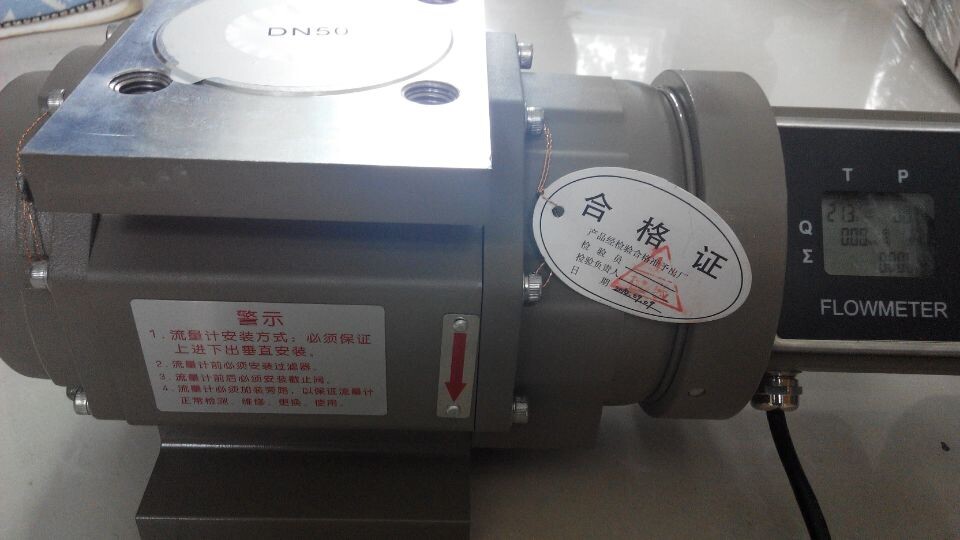How to Improve the Accuracy of Gas Roots Flowmeters Understanding the Principle of Roots Gas Flowmeters The Roots gas flowmeter is a highly accurate volumetric flow measurement device that offers flexible installation and space-saving design. It is widely used in industrial applications for measuring gas flow rates. The main components of a Roots gas flowmeter include the measuring chamber, conjugate rotors, and a counting mechanism. These rotors are installed inside the measuring chamber and rotate due to the pressure difference between the inlet and outlet of the gas flow. As the gas flows through the meter, the rotors turn, and each revolution of the rotor corresponds to four times the effective volume of the measuring chamber. This rotation is transmitted via a magnetic coupling and gear system to the counter, which displays the total gas volume that has passed through the meter. Key Factors Affecting Measurement Accuracy From the working principle, it's clear that the accuracy of the flowmeter depends heavily on the precision of the measuring chamber and the rotors. Any machining errors or misalignment can significantly affect the performance of the device. Additionally, the symmetry of the rotor and the measuring chamber, as well as the dynamic balance of the rotor, play a critical role in ensuring accurate readings, especially at low flow rates. The synchronization gears also have a major impact on both accuracy and operational noise. Their function is to maintain a consistent gap between the two rotors regardless of their position. This gap is typically around 0.1 mm for small-diameter meters and up to 0.4 mm for larger ones. If the gap is too large, more gas may pass through without being measured, reducing accuracy. Conversely, if the gap is too small, it might cause blockage from impurities, leading to inaccurate readings or even failure of the meter. The use of high-quality standard parts, such as bearings, also plays a vital role in maintaining accuracy. Our factory uses imported bearings, which are designed to reduce friction and improve performance. To ensure smooth operation, the dust cover is removed, and the grease inside is washed out to prevent damping during rotation. Splash lubrication is used during operation to keep the bearings cool and extend their lifespan. In addition to internal factors, several external conditions can influence the accuracy of a Roots flowmeter during actual use. Here are some common issues: 1) Pressure mismatch: When the flowmeter is installed on a high-pressure line but the gas is used on a low-pressure line, the flow rate calculated at low pressure may be lower than the actual flow, causing the meter to undercount. This can lead to significant measurement errors. 2) Poor piping design: For example, when two parallel pipes are used, and one is closed while the other is open, the pressure in the main pipe can drop, causing the flowmeter to reverse direction and accumulate flow incorrectly. To prevent this, a check valve should be installed before the flowmeter. 3) Proper installation is essential for accuracy and longevity. The flange holes on the meter body must align with the pipe flanges to ensure parallelism. The meter should be protected from external forces that could deform the casing. When starting the meter, always open the upstream valve first, then slowly open the downstream valve to avoid sudden pressure surges that could damage the rotor. By addressing these factors, users can significantly improve the reliability and accuracy of their Roots gas flowmeters in real-world applications. The use of water glass is very extensive, almost throughout the national economy of each department. In the chemical system is used to manufacture silica gel, silica black, zeolite molecular sieve, sodium metasilicate, silica sol, layer silicon and instant powder sodium silicate, sodium potassium silicate and other silicate products, is the basic raw material of silicon compounds. In the economically developed countries, the series of deep processing products with sodium silicate as raw material has developed to more than 50 kinds, some of which have been applied in the fields of high, fine and advanced science and technology; In light industry is washing powder, soap and other detergents indispensable raw materials, but also water softener, sink aid; In the textile industry for dyeing, bleaching and sizing; It is widely used in casting, grinding wheel manufacturing and metal preservative in mechanical industry. In the construction industry, it is used to manufacture quick-drying cement, acid-proof cement waterproof oil, soil curing agent, refractory materials, etc. In agriculture, silicon fertilizers can be made; In addition, it is used as silicon aluminum catalyst for petroleum catalytic cracking, filler of soap, adhesive of corrugated paper, metal preservative, water softener, detergent agent, refractory materials and ceramic raw materials, bleaching, dyeing and slurry of textiles, mine dressing, waterproof, plugging, wood fire prevention, food anti-corrosion and adhesive. Water Glass Casting,Milling Machine Part,Mold Cnc Turning,Silver Cast Iron Handwheel Tianhui Machine Co.,Ltd , https://www.thcastings.com